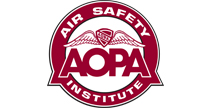Testing the untested
(ERA12FA093)
 By David Jack Kenny
By David Jack Kenny
In May, the National Transportation Safety Board published its most comprehensive study to date of the safety of experimental amateur-built aircraft. Among other conclusions, it corroborated the long-standing awareness within the homebuilder community that the accident risk is particularly acute during the initial phase of flight testing. This makes perfect sense: The inspections leading to the award of a special airworthiness certificate take place on the ground, and can only go so far to suggest whether all those moving parts will harmonize nicely in the air. The need to shake down the aircraft’s systems in a controlled environment is one reason for the restrictions placed in the initial operating limitations, typically including a prohibition on carrying passengers during Phase I testing. Unfortunately, it can be tempting to view the test period as a regulatory requirement to be flown off rather than an opportunity to learn the aircraft’s quirks under relatively benign conditions. Attention to that task can be compromised further when the test pilot isn’t already familiar with the model being tested.
On Dec. 1, 2011, the owner and builder of a newly completed Wittman Tailwind W10 took the airplane out for its second flight. His wife told investigators that “he was getting a feeling for the plane and was getting his forty hours of flying alone before he could take passengers.” Two employees of the Oswego County Airport outside Fulton, N.Y., saw the Wittman doing touch and goes on Runway 33, and both remarked on how fast it appeared to climb. A few minutes after it disappeared to the west, a 911 operator called the airport office to report the crash. Several witnesses near the scene agreed that the airplane’s engine seemed to be coughing and sputtering before its nose dropped and it descended into the trees. The tube-and-fabric airplane was shredded by the impact, and the pilot was killed.
The investigation initially focused on eight discrepancies identified during the initial airworthiness inspection. Three involved flight controls and three involved fuel lines, but the FAA inspector confirmed that all had been corrected prior to the first flight. The NTSB Materials Laboratory also examined the elevator control torque tube, which showed multiple deformations, buckling, overstress fractures, and the separation of a cold-weld joint. All of this, however, was eventually attributed to impact forces; the left horizontal stabilizer remained 50 feet off the ground, lodged in a tree.
Both propeller blades were broken, but the damage to the spinner suggested that the engine had been turning at low speed when that occurred. Fuel was present in the pump, the left magneto sparked on all four leads (the right mag didn’t spark at all), and all cylinders produced compression.
Eventually the investigators concluded that the afternoon’s weather—clear skies and light winds, with a temperature of 7 degrees Celsius and a dew point of 0—would have been conducive to serious carburetor ice even at cruise power. The carb heat control was found in the off position. The investigators surmised that while simultaneously trying to restore full power and turn the unfamiliar craft back toward the field for an emergency landing, the pilot stalled the airplane, perhaps at a bank angle steep enough to increase the load factor (and thus the stall speed) significantly. As it happened, he had not equipped the Wittman with any kind of stall warning indicator.
Touch and goes are not the ideal vehicle for cross-checking system performance and exploring the control response of an entirely untested airplane. FAA Advisory Circular 90-89A, Amateur-Built Aircraft and Ultralight Flight Testing Handbook, recommends making no more than one landing apiece on the first 10 flights—plus go-arounds as needed—instead using the time to verify systems operation, very gradually explore control response (beginning with turns at only 5 degrees of bank), and gently feel out the airspeeds and attitudes that provide the earliest indications of an impending stall. This provides the test pilot with a first approximation to workable approach and landing speeds. While this builder had some reason to be confident of his workmanship—his wife told investigators that he had previously built another airplane from scratch and restored a third—the high workload and low altitude of the traffic pattern left him with little elbow room in the event of the unexpected. Unfortunately, the unexpected happened.
Even in a certified aircraft, the first flight after maintenance or repair has to be treated as a test. A wary pilot anticipates that things may go wrong and plans against that contingency. When the aircraft itself is untested, the appropriate level of caution is much higher—even if the machine was built to a familiar design.
Related Links
“First-Flight Fiascos” Safety Pilot article
“Combating Carb Ice” Safety Brief
Essential Aerodynamics: Stalls, Spins, and Safety online course
“Engine Operations” Safety Advisor